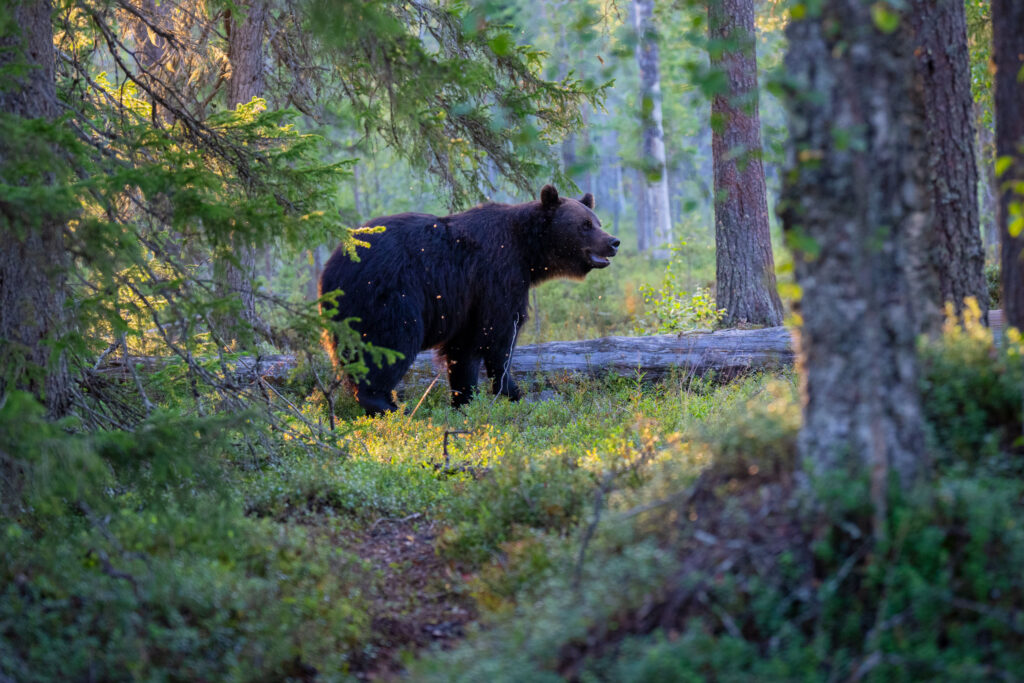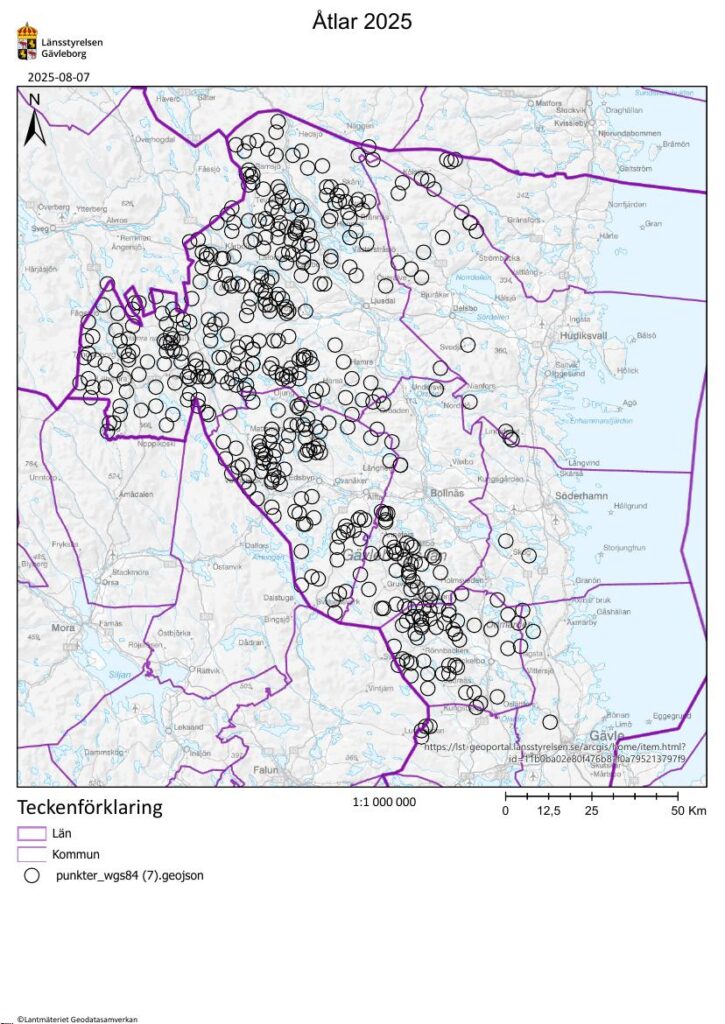
Licensed bear hunting began on 21 August, and on the first day alone, 124 bears were killed, over 25 percent of the total. Nearly 2,000 bait stations with food laid out to attract the bears make hunting very easy in many places.
This year’s licensed bear hunt in Sweden allows for 465 bears to be shot. As in previous years, the hunt is proceeding quickly, and after the first day of hunting, 124 bears had already been killed.
Nearly two thousand bait stations set up
Licensed hunting has become increasingly effective. Hunters who have applied for a permit are allowed to lay out bait (slaughterhouse waste, vegetables, grain and other edible items) in advance to attract the bears. The number of bait stations is steadily increasing. In 2024, 1,480 bait stations were registered. This year, 1,827 bait stations were registered a few weeks before the hunt began. They are also allowed to use cameras to see which bears visit the bait, and since 2023, it has been permitted to release two dogs at the bait to pick up the bear’s trail.

The bait stations are densely located in Gävleborg, with 587 approved applications for 70 bears.
Hunting interests guide hunting decisions
Behind the large-scale licensed hunts lies a deliberate plan to reduce the number of bears in Sweden. Each county has a wildlife management delegation that sets a management target for how many bears there should be in the county. The wildlife management delegation should consist of members from various interest groups. But in practice, it is hunters’ interests that dictate the decisions, as the overwhelming majority of members are hunters. The county administrative boards lean towards the Swedish Environmental Protection Agency’s minimum levels. Although the minimum levels are not intended to enable hunting, but to prevent populations from falling below critical limits, in practice they are interpreted as hunting quotas as soon as there is a surplus.
No damage to domestic animals caused by bears in 2024
Some county administrative boards justify licensed hunting by arguing that bears prey on moose, reducing the number of moose available for hunting. Other arguments are to protect domestic animals, mountain farming, crops, beekeeping and so on from damage. But in practice, there is not much that needs to be protected. Bears did not kill a single domestic animal in 2024. The only damage was 11 destroyed beehives and 14 destroyed silage bales.
Few large males left and a surplus of females
After the large-scale licensed hunts, the population has declined in several areas. There are significantly more females than males today, and there are significantly fewer large males left. Females with cubs may not be hunted, but now a couple of county administrative boards have suggested that this should perhaps be changed, and that bear cubs should also be shot.
Scientists warn of risks
Jonas Kindberg is a scientist and project manager for the Scandinavian Bear Project, which has been researching bears for 40 years. He believes that it is really important to pay attention to what is happening.
‘If you want the bear population to remain at the same level, you can shoot 8–15 per cent in a year, but today they shoot 25–30 per cent instead,’ he says.
If hunting continues at the same rate, Jonas Kindberg believes that the number could fall to the minimum level for favourable conservation status, which is 1,400 bears.
‘Within a couple of years, bear hunting must be significantly reduced if we want to keep licence hunting. If the population approaches 1,400 there will be little room for licensed hunting, only protective hunting.’
Jonas Kindberg sees no point in shooting bear cubs.
“This will result in lower population growth. It takes four to five years for a bear to reach sexual maturity.
However, he believes it is important to keep track of which bears are shot, not only in terms of numbers, but also gender, age and so on.
‘It may not be such a good idea if, for example, you have a lot of small male bears,’ concludes Jonas Kindberg.
Uncertain population
The Swedish bear population remained relatively stable at around 2,800 bears for many years. However, after the record-breaking licensed hunt in 2023, a preliminary estimate showed that there were only around 2,400 bears left. Today’s management target is 2,200 bears throughout the country. However, with the large-scale hunt, there is a high risk that there will be significantly fewer than that.
There are significantly more bears in border areas between different counties today than they did 15 years ago. It could be that bears are counted twice, and that there are fewer bears than one thinks in each county. In that case, more bears could be shot than one would have thought because the whole picture is not seen.
The current situation is uncertain, especially since the bears are only counted by county, separately. For example, there are significantly more bears in border areas between different counties today than they did 15 years ago. It could be that bears are counted twice, and that there are fewer bears than one would have thought in each county. In that case, more bears could be shot than one would have thought because the whole picture is not seen. Male bears in particular move over large areas.
No new national inventory will be carried out until 2027. Only then will there be a somewhat more reliable picture of what the record-breaking hunts have meant.
Bo Johansson/Susann Engqvist
Footnote: Licensed hunting begins on 21 August and continues until 15 October at the latest. In Jämtland County, 108 bears may be killed, in Norrbotten County 24 bears, in Värmland County a maximum of three bears, with a maximum of one female (the hunt was cancelled after a few hours when the first bear shot was a female), in Gävleborg County 70 bears (maximum 35 females), 85 bears in Västernorrland County, 75 bears in Dalarna County, and 100 bears i Västerbotten County. (biggest number ever)